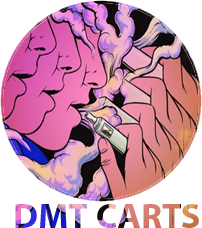How psychedelic drugs may help with depression
At a Glance
- Psychedelic drugs being tested as therapies for treatment-resistant depression activate receptors within brain cells that promote new brain cell connections.
- A better understanding of these mechanisms could lead to related drugs that encourage new brain cell connections while avoiding hallucinogenic effects.
- Some types of psychedelic drugs, such as psilocybin and MDMA (ecstasy), have shown promise as therapies for treatment-resistant depression and post-traumatic stress disorder. They appear to work by encouraging the growth of new connections between neurons in the brain. This ability of the brain to make new connections is called plasticity.Exactly how these drugs promote plasticity in the brain has been unclear. If the mechanisms could be understood, it might be possible to develop related drugs that can promote brain plasticity without causing unwanted hallucinogenic effects.Previous studies have found that psychedelic drugs encourage plasticity by binding to a cellular receptor in neurons called the 5-hydroxytryptamine 2A receptor (5-HT2AR). But other compounds that bind to 5-HT2AR don’t promote plasticity. These include serotonin, a chemical messenger affected by some antidepressant treatments.
An NIH-funded research team led by Dr. David Olson from the University of California, Davis previously developed a sensor that could distinguish which drugs that bind to 5-HT2AR have hallucinogenic properties and which don’t. In a new study, the team set out to better understand why only certain compounds that bind 5-HT2AR drive plasticity. Their results were published on February 17, 2023, in Science.
The team first tested the properties of many compounds known to bind to 5-HT2ARs. They found that a compound’s ability to cross a neuron’s membrane and get inside the cell, rather than its ability to activate 5-HT2AR, predicted how well it boosted the growth of structures called dendritic spines. These structures form connections between neurons.
The researchers next confirmed that clusters of 5-HT2ARs could be found inside neurons as well as on their surface. Compounds able to cross into the neurons and bind to these inner receptors induced the formation of dendritic spines. Compounds that could only bind to the receptors on the neurons’ outer surface, like serotonin, didn’t have a similar effect.
These results suggest that the 5-HT2ARs inside and outside of neurons activate different cell-signaling pathways. When the researchers used an electrical current to allow compounds like serotonin to enter neurons, the compounds promoted dendritic spine growth.
Similar results were seen in neurons engineered to make a protein that can pull serotonin into cells. Neurons that took serotonin inside formed new dendritic spines. Neurons where serotonin could only bind to exterior 5-HT2ARs did not.
To see whether a similar phenomenon could be detected in living brains, the team used mice engineered to make a protein that can bring serotonin into neurons. When these mice were treated with a drug to increase serotonin levels in a region of the brain, the neurons formed substantially more dendritic spines than in mice without the protein. The mice also showed improvements in a behavior test thought to be relevant to depression.
“These results give us deeper mechanistic insight into how the receptor promotes plasticity, and may allow us to design better drugs,” Olson says.
More work is needed to understand how to safely activate the pathways for brain plasticity while avoiding hallucinogenic effects.
—by Sharon Reynolds
